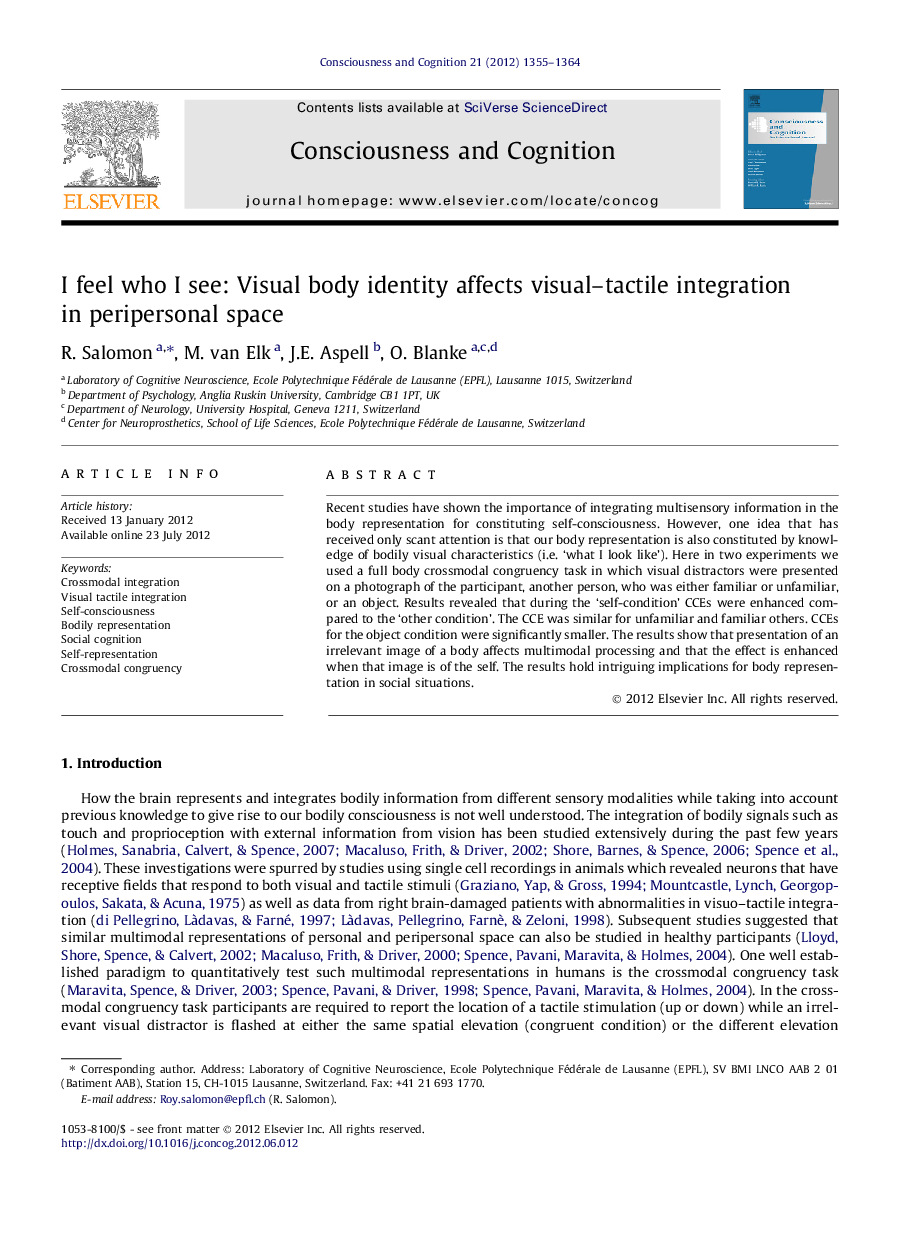| Article ID | Journal | Published Year | Pages | File Type |
|---|---|---|---|---|
| 927623 | Consciousness and Cognition | 2012 | 10 Pages |
Recent studies have shown the importance of integrating multisensory information in the body representation for constituting self-consciousness. However, one idea that has received only scant attention is that our body representation is also constituted by knowledge of bodily visual characteristics (i.e. ‘what I look like’). Here in two experiments we used a full body crossmodal congruency task in which visual distractors were presented on a photograph of the participant, another person, who was either familiar or unfamiliar, or an object. Results revealed that during the ‘self-condition’ CCEs were enhanced compared to the ‘other condition’. The CCE was similar for unfamiliar and familiar others. CCEs for the object condition were significantly smaller. The results show that presentation of an irrelevant image of a body affects multimodal processing and that the effect is enhanced when that image is of the self. The results hold intriguing implications for body representation in social situations.
Graphical abstractFigure optionsDownload full-size imageDownload as PowerPoint slideHighlight► We used a full body crossmodal congruency paradigm to test the effects of identity on visual-tactile processing. ► Visual distractors were presented on a self-image, an image of another person or an image of a body sized object. ► CCE was larger for the self-image than for an image of the other, and larger for bodies than for the object image. ► CCEs correlated with the perceived similarity with the other’s picture. ► Body representation is modified in social situations.
